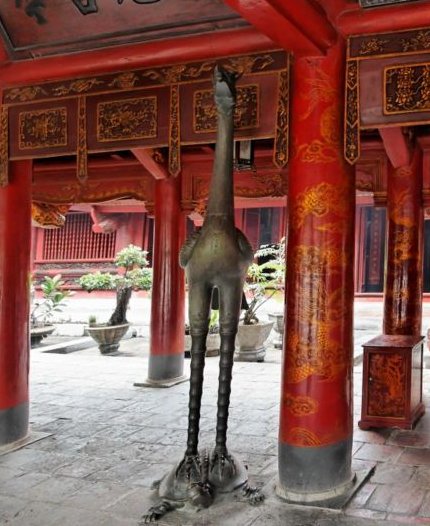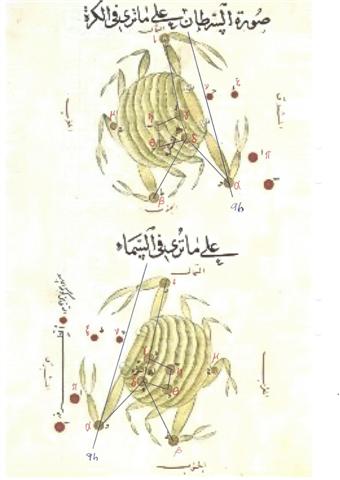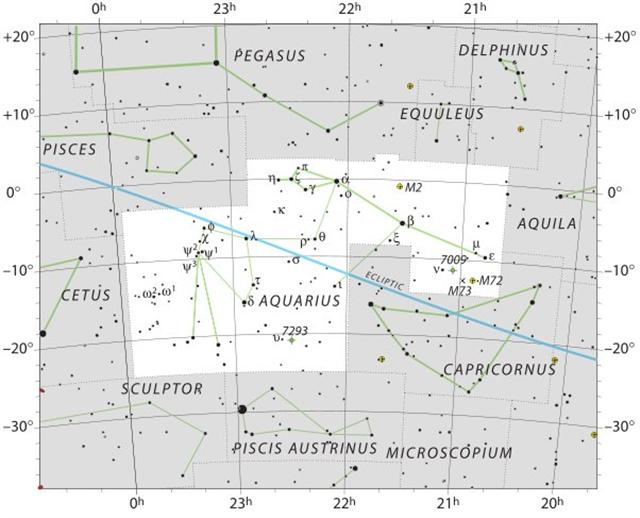Next page:
I think the evidence has revealed how the Milky Way at midsummer was standing up like a great Tree and how this therefore could be envisioned as an opportunity for the souls to descend, to climb down from high up. But this was only an image, an idea, a picture, and there had to be a more practical way for the souls to ascend and descend: ... From a religious point of view, the high regard for flies, whose increase or reduction causes a similar increase or reduction in the size of the human population, is interesting, even more so because swarms of flies are often a real nuisance on Easter Island, something most visitors have commented on in vivid language. The explanation seems to be that there is a parallel relationship between flies and human souls, in this case, the souls of the unborn. There is a widespread belief throughout Polynesia that insects are the embodiment of numinous beings, such as gods or the spirits of the dead, and this concept extends into Southeast Asia, where insects are seen as the embodiment of the soul ...
... Night came, midnight came, and Tuu Maheke said to his brother, the last-born: 'You go and sleep. It is up to me to watch over the father.' (He said) the same to the second, the third, and the last. When all had left, when all the brothers were asleep, Tuu Maheke came and cut off the head of Hotu A Matua. Then he covered everything with soil. He hid (the head), took it, and went up. When he was inland, he put (the head) down at Te Avaava Maea. Another day dawned, and the men saw a dense swarm of flies pour forth and spread out like a whirlwind (ure tiatia moana) until it disappeared into the sky. Tuu Maheke understood. He went up and took the head, which was already stinking in the hole in which it had been hidden. He took it and washed it with fresh water. When it was clean, he took it and hid it anew. Another day came, and again Tuu Maheke came and saw that it was completely dried out (pakapaka). He took it, went away, and washed it with fresh water until (the head) was completely clean. Then he took it and painted it yellow (he pua hai pua renga) and wound a strip of barkcloth (nua) around it. He took it and hid it in the hole of a stone that was exactly the size of the head. He put it there, closed up the stone (from the outside), and left it there. There it stayed ... The 'Tree' may have stood on a kind of Tortoise (or Crab), because in the time when Bharani (Musca Borealis) was at 0h the northern midsummer was at Cancer. ... I think I am right about the Tortoise, for I find the following passage in Jensen, p. 65, where he notes the absence of the Crab: ‘Ganz absehend davon, ob dasselbe für unsere Frage von Wichtigkeit werden wird oder nicht, muss ich daran erinnern, das unter den Emblemen, welche die sogenannten 'Deeds of Salè' häufig begleiten, verschiedene Male wie der Scorpion so die Schildkröte abgebildet gefunden wird’ ...
In rongorongo times the Crane had its ξ star rising with the Sun in February 9 (2-9) and 40 days and nights counted from the beginning of the year. It rose at the same time as Sadalsud (the Luckiest of the Lucky, β Aquarii):
At the time of Bharani it was day 364 and decem * 30 = 300. ... Horapollo, the grammarian of Alexandria, about A.D. 400, tells us that the crane was the symbol of a star-observer in Egypt ... ... On February 9 the Chorti Ah K'in, 'diviners', begin the agricultural year. Both the 260-day cycle and the solar year are used in setting dates for religious and agricultural ceremonies, especially when those rituals fall at the same time in both calendars. The ceremony begins when the diviners go to a sacred spring where they choose five stones with the proper shape and color. These stones will mark the five positions of the sacred cosmogram created by the ritual. When the stones are brought back to the ceremonial house, two diviners start the ritual by placing the stones on a table in a careful pattern that reproduces the schematic of the universe. At the same time, helpers under the table replace last year's diagram with the new one. They believe that by placing the cosmic diagram under the base of God at the center of the world they demonstrate that God dominates the universe. The priests place the stones in a very particular order. First the stone that corresponds to the sun in the eastern, sunrise position of summer solstice is set down; then the stone corresponding to the western, sunset position of the same solstice. This is followed by stones representing the western, sunset position of the winter solstice, then its eastern, sunrise position. Together these four stones form a square. They sit at the four corners of the square just as we saw in the Creation story from the Classic period and in the Popol Vuh. Finally, the center stone is placed to form the ancient five-point sign modern researchers called the quincunx ... Later on in this series of rituals, the Chorti go through a ceremony they call raising the sky. This ritual takes place at midnight on the twenty-fifth of April and continues each night until the rains arrive. In this ceremony two diviners and their wives sit on benches so that they occupy the corner positions of the cosmic square. They take their seats in the same order as the stones were placed, with the men on the eastern side and the women on the west. The ritual actions of sitting down and lifting upward are done with great precision and care, because they are directly related to the actions done by the gods at Creation. The people represent the gods of the four corners and the clouds that cover the earth. As they rise from their seats, they metaphorically lift the sky. If their lifting motion is uneven, the rains will be irregular and harmful ... Al Sufi may have illustrated a descent at Cancer:
Because in his drawing of Gemini he has right ascension time increasing from right to left (and with the forearm - Al Dhirā' - of Castor conspiciously pointing at the northeast corner where the Sun rose at midsummer):
Thus Al Sufi evidently has a time-reversed copy of Gemini above that of his normal view. His time-reversed Cancer corresponds to the view of Hevelius, viz. the pattern as it looks from the outside of the starry sphere whereas his bottom drawing is the pattern as it looks from inside, when we look up to the stars. By presenting the higher up view first, followed by the version down on earth, we as viewers will similarly descend from high up and down to earth - precisely what the souls were said to be doing when Cancer was at midsummer. Furthermore, a Crab (or Turtle) has an upper shell (Ç) and a lower shell (È): ... After the great flood had at long last receded, Raven had gorged himself on the delicacies left by the receding water, so for once, perhaps the first time in his life, he wasn't hungry. But his other appetites, his curiosity and the unquenchable itch to meddle and provoke things, to play tricks on the world and its creatures, these remained unsatisfied. Raven gazed up and down the beach. It was pretty, but lifeless. There was no one about to upset, or play tricks upon. Raven sighed. He crossed his wings behind him and strutted up and down the sand, his shiny head cocked, his sharp eyes and ears alert for any unusual sight or sound. The mountains and the sea, the sky now ablaze with the sun by day and the moon and stars he had placed there, it was all pretty, but lifeless. Finally Raven cried out to the empty sky with a loud exasperated cry. And before the echoes of his cry faded from the shore, he heard a muffled squeak. He looked up and down the beach for its source and saw nothing. He strutted back and and forth, once, twice, three times and still saw nothing. Then he spied a flash of white in the sand. There, half buried in the sand was a giant clamshell. As his shadow fell upon it, he heard another muffled squeak. Peering down into the opening between the halves of the shell, he saw it was full of tiny creatures, cowering in fear at his shadow. Raven was delighted. Here was a break in the monotony of the day. But how was he to get the creatures to come out of their shell and play with him? Nothing would happen as long as they stayed inside the giant clamshell. In due time new life would emerge from the Crab / Clamshell (though not in line Ga3 but later where Corvus ought to be): They were not going to come out as long as they were so afraid of him. So Raven leaned over his head, close to the shell, and with all the cunning and skill of that smooth trickster's tongue, that had so often gotten him in and out of so many misadventures during his troubled and troublesome existence, he coaxed and cajoled and coerced the little creatures to come out and play in his wonderful shiny new world. As you know the Raven has two voices, one harsh and strident, and the other which he used now, a seductive, bell-like croon which seems to come from the depth of the sea, or out of the cave where winds are born. It is an irresistable sound, one of the loveliest in the world. It wasn't long before first one and then another of the little shell-dwellers emerged from the shell. Some scurried back when they saw the Raven, but eventually curiosity overcame their caution and all of them had crept or scrambled out.
The Milky Way as a Tree was probably not the primary idea. Instead the vertical pillar around which everything moved ought to have been the 'Tree' from the south pole up to the north pole, possibly corresponding to the Egyptian djed (ξ) column:
In rongorongo times ξ Cancri rose at Ga3-14 together with the Sun:
This was the place at the opposite side of day 400, when ν Aquarii rose with the Sun. However, ξ Aquarii (Bunda) came a week later: ... β and ξ also constituted the Persian lunar station Bunda and the similar Coptic Upuineuti, the Foundation; but β alone marked the sieu Heu, Hiu, or Hü, Void, anciently Ko, the central one of the seven sieu which, taken together, were known as Heung Wu, the Black Warrior, in the northern quarter of the sky. It is found in Hindu lists as Kalpeny, of unknown signification. On the Euphrates it was Kakkab Nammaχ, the Star of Mighty Destiny, that may have given origin to the title of the manzil [Al Sa'd al Su'ud], as well as to the astrologers' name for it - Fortuna Fortunarum. Al Firuzabadi of Khorasan, editor of Al Kāmūs, the great Arabic dictionary of the 14th century, called some of the smaller stars below this Al Au'ā, the plural of Nau', a Star, but without explanation, and they certainly are inconspicious ...
My imagination here perceives the outline of someone climbing up along the ecliptic towards 0h. Could this be the origin of the kiore figure? A week later Sirius culminated at midnight - at the opposite side of the year compared to when Vega culminated at midnight:
This important time was characterized by the date "January 1 (366). Furthermore, it was also the position of the Knot (Ukdah) in the Hydra, at the top of the mast (pole, Te Pou) of the Sunken Ship (Argo Navis):
|
















